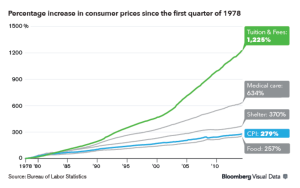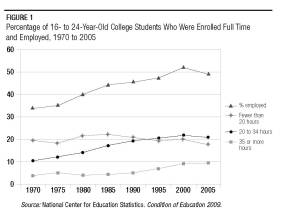Every semester, I struggle with how I can fairly measure, assess, and reward student classroom engagement. “Participation” is a ubiquitous grading category on course syllabi, but as a student and instructor, participation has always felt like a way for instructors to reward students and penalize others based on often arbitrary, inconsistent standards. Reading critiques of participation from scholars like Margaret Price (have you read Mad at School yet? because you should) made me rethink participation from an accessibility standpoint. As an instructor deeply committed to creating positive classroom social dynamics and student learning, I value students’ various forms of classroom engagement. I want students to be aware of their classroom engagement and how it impacts their learning and their peers’ learning. For me, assigning a grade for participation at the end of the semester was not the best way for students to take control of their learning or for me to assess the various ways students engage in the course.
So this semester in my technical writing course, I am experimenting with professionalism. The concept of “professionalism” makes sense in the context of my class, which prepares students to write in professional contexts. However, I would also use “participation” as a framework in a different course.
Discussing Professionalism
I began the semester with a discussion about professionalism. In the first week of class, I assigned students a free-write for homework about professionalism using these prompts:
- What does professionalism mean? How can we be professional in classroom environments?
- What professional behaviors help you learn best?
- What professional behaviors do you expect from classmates?
- What professional behaviors do you expect from group members?
- What professional behaviors do you expect from the instructor?
I also asked students to read “The Do’s and Don’ts of Professionalism in the Workplace” (Levo), “What Does Professionalism Look Like?” (Harvard Business Review), and “You Call It Professionalism; I Call It Oppression in a Three-Piece Suit” (Everyday Feminism). These articles trouble the concept of professionalism, and in class I facilitate a discussion about how professional standards represent cultural values about identity (gender, race, ethnicity, sexuality, class, ability, age, etc.) that are embodied. We also discuss differences in professionalism across cultures and contexts (for example, professionalism expectation differences in a start-up company vs a Fortune 500 company; differences across cultures if students have experience working in different communities or countries).
Establishing Professionalism Expectations
After we discussed professionalism as a class, we created a set of class standards for professionalism. I asked students to share their responses to the last 4 questions with group members and as a group to decide on at least 1 concrete action for each question. I created an open Google document, and students shared their group responses there. As a class, we reviewed each question response, clarified any vague actions (for example, what does “being prepared for class” entail?), and ultimately agreed on a set of classroom expectations. We also explicitly linked these behaviors to individual and peer learning, so we discussed how a classmate’s lack of preparation, such as not completing the reading or homework assignment, might impact other students in the class.
Reflecting on Professionalism Expectations
As part of the professionalism discussion, I’ve assigned midterm and end-of-semester professionalism reflection memos. The memo genre is part of technical writing, and students may be asked in the future to write performance evaluations, so these assignments align with larger course objectives. The memos ask students to reflect on the class expectations for professionalism and learning. Students use the class expectations to reflect on their own classroom learning behaviors to assess their professionalism. For the mid-term memo, I also asked students to consider how they can improve or sustain their professional behaviors to better facilitate their learning. The memos so far have demonstrated that students are critically thinking about how they can best engage with the course material to support their learning and their peers’ learning. For example, students have shared their different approaches to understand the course readings. They also share other ways they are engaging with the class material, such as by taking pictures on their smartphones of “technical writing in the wild.” These methods would normally not be visible in the daily activities of my class, but they demonstrate how students are using a variety of techniques to prepare for class and to take responsibility over the material.
So far the professionalism expectations and memos seem to be serving their intended purpose in my class; there are always unavoidable personal issues that complicate established standards, but for the most part, students are productively engaged in class. In the future, I would want to devote more time to discussing professionalism and learning in class; because of a packed course schedule, the “discussing” and “establishing” portions were limited to 30 minutes. I think this framework would be particularly appropriate in early undergraduate courses. Most of my students are juniors and seniors, and they already have a strong sense of how they learn best and what they need from their peers. I believe the professionalism/participation expectations and memos could be particularly useful for students early in their undergraduate careers who may still be learning how to learn especially when it comes to collaborative projects.

